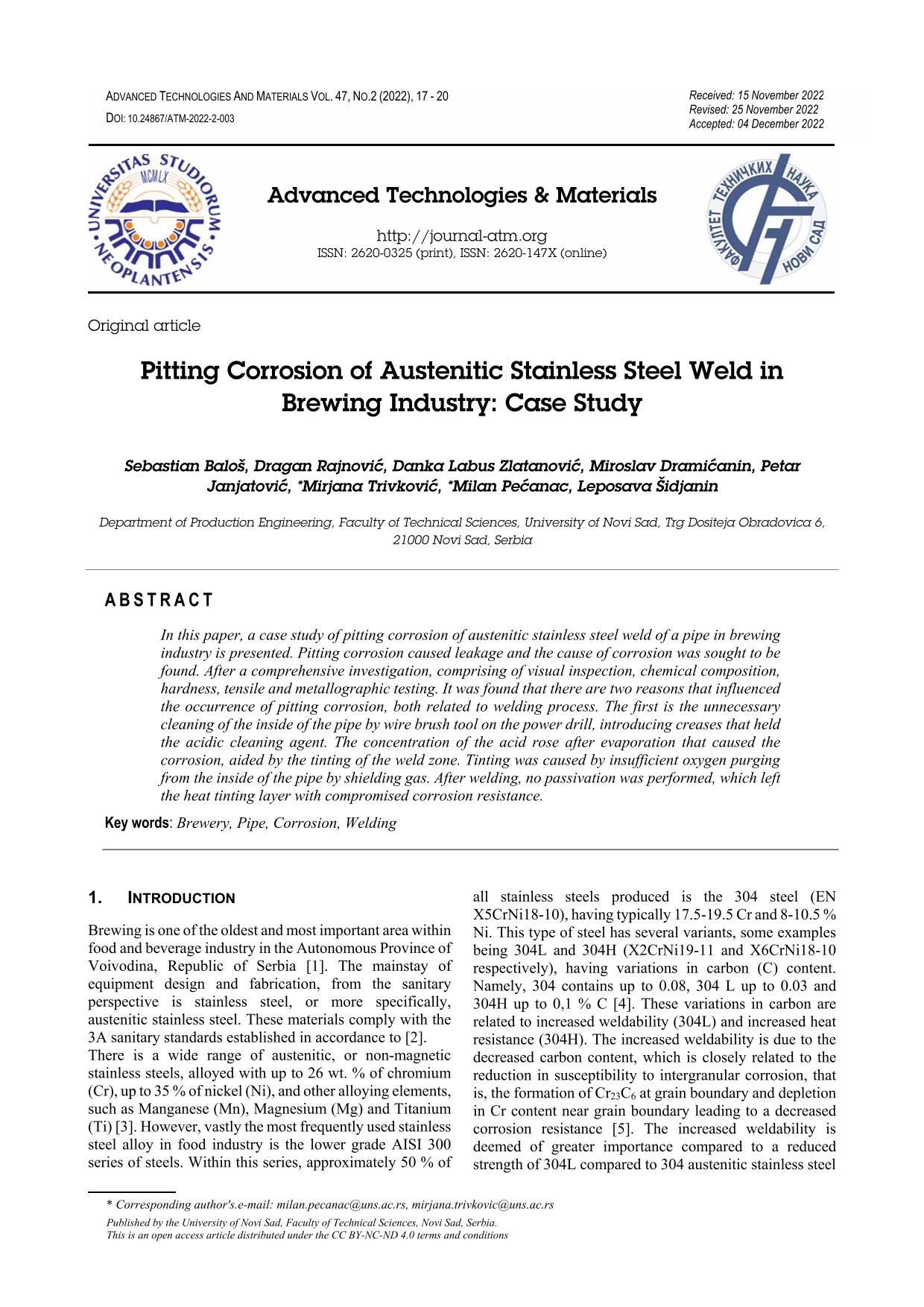Pitting Corrosion of Austenitic Stainless Steel Weld in Brewing Industry: Case Study

Published 2022-12-20
abstract views: 143 // Full text article (PDF): 105
How to Cite

This work is licensed under a Creative Commons Attribution 4.0 International License.
Abstract
In this paper, a case study of pitting corrosion of austenitic stainless steel weld of a pipe in brewing industry is presented. Pitting corrosion caused leakage and the cause of corrosion was sought to be found. After a comprehensive investigation, comprising of visual inspection, chemical composition, hardness, tensile and metallographic testing. It was found that there are two reasons that influenced the occurrence of pitting corrosion, both related to welding process. The first is the unnecessary cleaning of the inside of the pipe by wire brush tool on the power drill, introducing creases that held the acidic cleaning agent. The concentration of the acid rose after evaporation that caused the corrosion, aided by the tinting of the weld zone. Tinting was caused by insufficient oxygen purging from the inside of the pipe by shielding gas. After welding, no passivation was performed, which left the heat tinting layer with compromised corrosion resistance.

